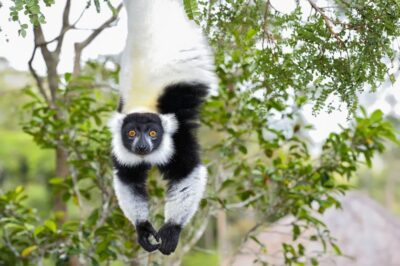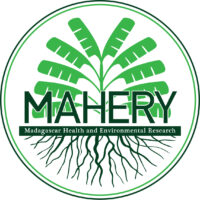Harvard University: Madagascar Health and Environmental Research (MAHERY)
What We Do
There are no greater global concerns than the disappearance and destruction of our planet’s ecosystems and wildlife and the improvement of human health and food security for vulnerable human populations around the world.
MAHERY has focused much of its efforts on the following bodies of research:
- the impact of overhunting and terrestrial wildlife declines on food security and nutrition
- the impact of fisheries management and marine conservation on food security and nutrition
- the use of traditional medicines by local people
- the practice of pica and geophagy
- barriers to accessing healthcare and adequate nutrition
- the role of livestock husbandry in securing adequate nutrition
- the role of wildlife hunting and consumption in zoonotic disease transmission
- the disease ecology of various infectious diseases (i.e. malaria)

Black and white ruffed lemur in Madagascar. Photo: Arto Hakola.
What Lemur Species We Study
Focal lemur species include:
- Indri (Indri indri)
- Black and white ruffed lemur (Varecia variegata)
- Aye-aye (Daubentonia madagascariensis)
- White-headed lemur (Eulemur albifrons)
How We Support Local Communities
In each of these research activities, we have collaborated with local organizations and trained American and Malagasy students to understand how to carry out interdisciplinary research. All of our work has always been driven by and embedded in local communities to understand the psychology around illegal wildlife harvesting and to develop a paired vision for future conservation and development.
Since 2004, our team has been actively researching the intersection of environmental health and human health to understand the ways in which ecosystem transformation has downstream effects on human wellbeing. Most of our work has centered on estimating the role of bushmeat hunting in both decimating local wildlife populations (lemurs, carnivores, bats, tenrecs, etc.) and also influencing human nutrition and food security.






Comments are closed.